#greccio
Explore tagged Tumblr posts
Text
" Giunto quasi alla fine della sua vita, malatissimo, [Francesco d'Assisi] sapeva di non poter più rivedere quelle terre lontane verso cui si era mosso con tanto entusiasmo; la rinuncia non chiude interamente in negativo i suoi sogni di evangelizzazione ecumenica, perché porta a un ripensamento e a un diverso recupero di quel grandioso progetto. Non ci sono luoghi o interlocutori privilegiati: il presepio di Greccio spegne il bisogno del viaggio verso la Terrasanta e della sua difesa; non c'è bisogno di attraversare il mare per vibrare d'emozione né di imporre la fede, ritenuta la vera, con le armi e la violenza. Betlemme è ovunque, anche a Greccio, perché deve essere prima di tutto nei cuori: «Quasi nova Bethlehem de Graecio facta est», Greccio è divenuta una nuova Betlemme.
Tommaso [da Celano] insiste sulla gioia mai provata prima, né dai fedeli, né dal sacerdote, evidentemente incapace anche lui, prima della predica di Francesco, di intendere profondamente il mistero che sta celebrando. Di fronte alle carenze del clero, alla tiepidezza della fede dei cristiani, gli uni e gli altri immemori del sacrificio divino, il Bambino ha gli occhi chiusi, dorme di un sonno prossimo alla morte. Se gli infedeli non hanno conosciuto Cristo, i cristiani lo hanno dimenticato. "
Chiara Frugoni, Vita di un uomo: Francesco d'Assisi, introduzione di Jacques Le Goff, Einaudi (collana ET Saggi n° 824), 2006⁶; pp. 113-114.
[Prima edizione: 1995]
#Chiara Frugoni#letture#leggere#saggistica#saggio storico#Francesco d'Assisi#presepio#XIII secolo#presepe#Greccio#Storia medievale#Natale#natività#tradizioni#Storia d'Italia#Storia del Medioevo#Terrasanta#Lazio#presepe vivente#Storia delle religioni#semplicità#Chiesa Cattolica#cristianità#Jacques Le Goff#cristianesimo#vangeli apocrifi#rievocazioni#Betlemme#pellegrinaggi#Terra Santa
6 notes
·
View notes
Text

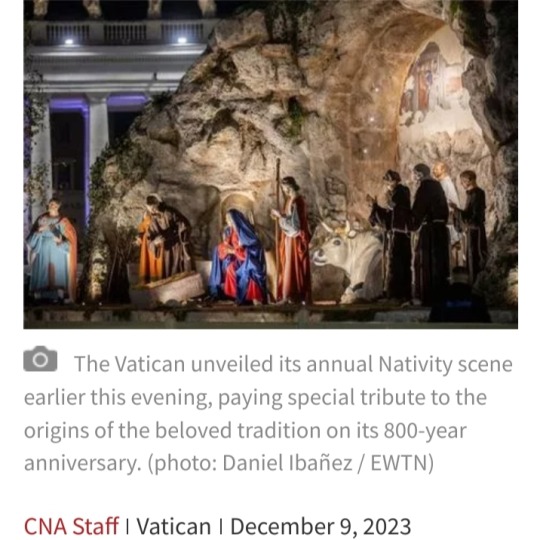
The Vatican unveiled its annual Nativity scene earlier this evening, paying special tribute to the origins of the beloved tradition on its 800th anniversary.
The scene in St. Peter’s Square depicts not only Mary and Joseph standing beside the manger, but also St. Francis of Assisi, who organized the first Nativity scene in a cave in the Italian village of Greccio on Christmas Eve in 1223.
Cardinal Fernando Végez Alzaga, the president of the Governate of the Vatican City State, presided over the December 9 inauguration ceremony.
More than a thousand people gathered in the square for the event, which included moments of catechesis, an explanation of how the scene was put together and the signing of seasonal hymns.
The Vatican’s Greccio-inspired Nativity scene does not include live animals and people, as St. Francis’ original did, but it does feature life-size terracotta figures, crafted by renowned Neapolitan sculptor Antonio Cantone.

At the center of the scene is the now-empty manger, where a figure of the Newborn Savior will be placed on Christmas Eve.
On one side of manger, a statue of Mary kneels, flanked by a rendition of St. Joseph, while on the other side, a statue of St. Francis of Assisi stands in a pose of wonder.
In addition to the figures of Mary, Joseph, St. Francis, and the traditional ox and donkey, the 13th-century mayor of Greccio who helped organize the first Nativity scene, Giovanni Velita, is featured in statue form, along with his wife, Alticama.
Three Franciscan friars, whom St. Francis had tasked with setting up the first Nativity scene as a place where local faithful could come and contemplate the poverty of the Incarnate Lord, are also depicted.
The backdrop of the scene is a replica of the fresco that decorates the Chapel of the Nativity in Greccio, which is built into the grotto where St. Francis set up the first Nativity scene.
On one half of the fresco, the saint is shown kneeling in adoration of the Christ Child; on the other side, Mary is depicted feeding the Newborn Savior, while the figures of Joseph, the ox and the donkey look on.
Underneath the fresco, a Franciscan friar is depicted celebrating Mass in the grotto.
The friar elevates the Body of Christ directly behind the manger.

In another fitting tribute to the Nativity scene’s origins, this year’s Vatican display was provided by the Diocese of Rieti, which is where Greccio is located.
The Vatican’s Christmas tree was also lit at the December 9 ceremony.
The tree, an 80-foot-tall fir, had been donated by the Italian community of Macra, located in the northwest of Italy.
The tree was adorned with edelweiss flowers that are native to the Alpine region.
Upon lighting, it glowed with ever-changing patterns of green, blue and red.
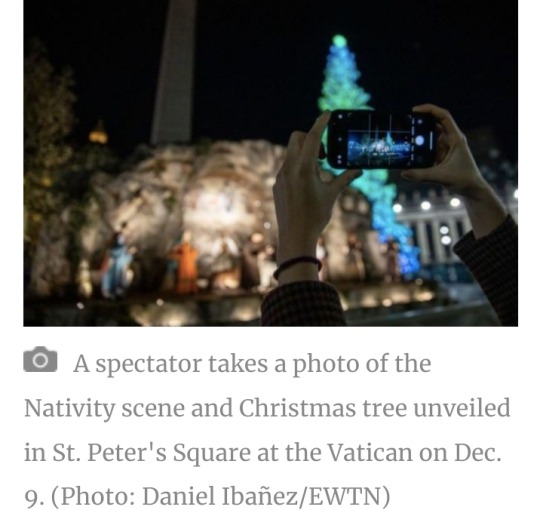
After the tree’s use in St. Peter’s Square, its wood will be used to make toys for children in need.
Earlier in the day, Pope Francis spoke to delegations of the two communities that had donated the Nativity scene and the Christmas tree.
The Pope said that meditating in front of any Nativity scene should “awaken in us the nostalgia for silence and prayer, in our often so-hectic daily life.”
The Pope also said that the Vatican Nativity scene’s connection to Greccio should in turn prompt people to think and pray for the inhabitants of the Holy Land amid the ongoing war between Israel and Hamas, especially children and their parents affected by the conflict.
“These are the ones who pay the real price of war,” Pope Francis said.
Both the Nativity scene and the tree will remain in St. Peter’s Square until the feast of the Baptism of the Lord on 7 January 2024.
Source: National Catholic Register

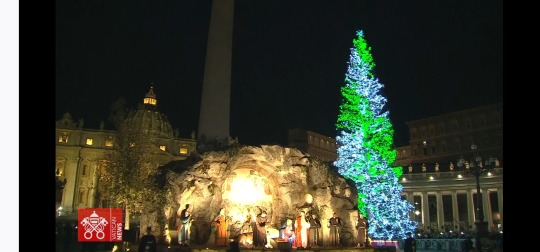

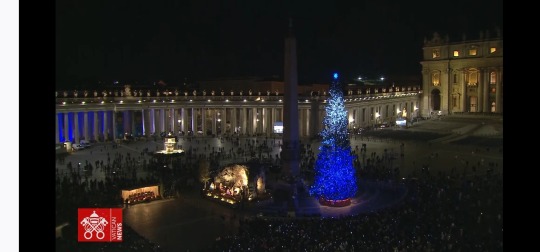
youtube
Highlights: Inauguration of the Nativity scene and lighting of the Christmas tree on 9 December 2023
10 December 2023
#Youtube#Vatican#Nativity Scene#St. Francis of Assisi#St. Peter’s Square#Greccio#24 December 1223#Cardinal Fernando Végez Alzaga#Pope Francis#catechesis#Antonio Cantone#Giovanni Velita#Alticama#Chapel of the Nativity#Diocese of Rieti#fir#edelweiss flowers#Christmas Tree#Christmas#Nativity
2 notes
·
View notes
Text
San Francesco d'Assisi e il Primo Presepe: Origini di una Tradizione Millenaria.
La storia del presepe e il suo legame con il Natale attraverso i secoli.
La storia del presepe e il suo legame con il Natale attraverso i secoli. Il presepe è uno dei simboli più amati e rappresentativi del Natale. Ma chi ha avuto l’idea di realizzare il primo presepe? Per rispondere a questa domanda, dobbiamo fare un salto indietro nel tempo fino al XIII secolo, quando San Francesco d’Assisi, con la sua semplicità e devozione, diede vita a una tradizione che oggi è…
#Alessandria today#celebrazioni natalizie#cultura e arte natalizia#fede e tradizione#figure del presepe#Giovanni Velita#Google News#Greccio#italianewsmedia.com#mangiatoia Betlemme#Natale 2024#Natale cristiano#Natale e fede#Natale nel mondo#origini del presepe#origini storiche.#pastori nel presepe#Pier Carlo Lava#Presepe#presepe artistico#presepe barocco#presepe di Greccio#presepe e spiritualità#presepe italiano#presepe moderno#presepe napoletano#presepe storico#presepe vivente#presepi famosi#presepi in Europa
0 notes
Photo

PRIMA PAGINA Leggo di Oggi lunedì, 16 dicembre 2024
#PrimaPagina#leggo quotidiano#giornale#primepagine#frontpage#nazionali#internazionali#news#inedicola#oggi oggi#umidita#mobilita#tutto#metro#anno#dicembre#horror#pagina#social#balla#samba#nello#greccio#presepio#mercato#oggettistica#presepe#sabato#ingresso#premier
0 notes
Text
Críticas — Francisco, Arauto de Deus (1950), São Francisco de Assis (1961), Irmão Sol, Irmã Lua (1972), Francesco: A História de São Francisco de Assis (1989), Clara e Francisco (2007)
São Francisco e a origem do presépio Baseado no livro homônimo de João Nunes Maia, Francisco de Assis nasceu em Assis em 1182 batizado Giovanni di Pietro di Bernardone em homenagem ao pai, Pietro di Bernardone, um dos maiores comerciantes da região, casado com Pica Bourlemont descendente de franceses. Ainda garoto, Francisco organizava altas festas com bebida e comida à vontade: um simples…
#AL-Kamil#Antônio de Pádua#Arauto de Deus (1950)#Belém#Clara de Assis#Clara e Francisco (2007)#Cruzadas#Discípulo Amado#Evangelho#Francesco: A História de São Francisco de Assis (1989)#Francisco#Francisco de Assis#Franco Zeffirelli#Giovanni di Pietro di Bernardone#Greccio#Helena Bonham#Irmã Lua (1972)#Irmão Sol#João Nunes Maia#Liliana Cavani#médium#Mickey Rourke#muçulmano#Natal#Pai Celestial#Pai Francisco#Papa Inocêncio III#Pica Bourlemont#Pietro di Bernardone#presépio
0 notes
Text
Greccio accoglie il primo film che ne racconta la storia
Ottocento anni dopo aver ospitato il primo presepio della storia, Greccio accoglie il primo film che ne racconta la storia. Domenica 17 dicembre alle 18.15 a Greccio, nel Santuario francescano del Presepio, verrà infatti proiettato La Stella di Greccio di Arnaldo Casali, che narra la nascita del Presepio a Greccio nel 1223 per iniziativa di Francesco d’Assisi. Prodotto da ConfraTerni e Istess…
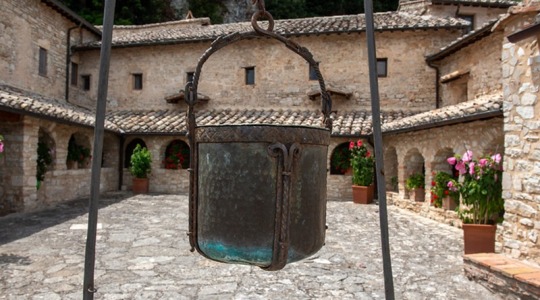
View On WordPress
0 notes
Text
Marmore, resta chiusa un'altra settimana la strada per Piediluco
“Stiamo proseguendo con le verifiche sul costone sovrastante la Sp 79 Ternana nella zona di Mazzelvetta (Marmore). L’obiettivo è terminare a breve i sondaggi e mettere in sicurezza la parti che risulteranno più a rischio. Entro la prossima settimana prenderemo le misure che risulteranno necessarie”. A dirlo la presidente Laura Pernazza e il consigliere delegato alla viabilità Sergio Armillei a…

View On WordPress
0 notes
Text
Maggio 2010 - Cammino di Francesco - Da La Verna a Poggio Bustone passando per Greccio.

5/01/2024 - Greccio - Dopo 14 anni a visitare la mostra dei presepi e a mangiare polenta. Sono passato a salutare il fratello e amico Francesco.
Una piccola e originale escursione per iniziare e festeggiare al meglio, l'ingresso del nuovo anno già in corso con positività, allegria e gratitudine.
lan ✍️
35 notes
·
View notes
Text
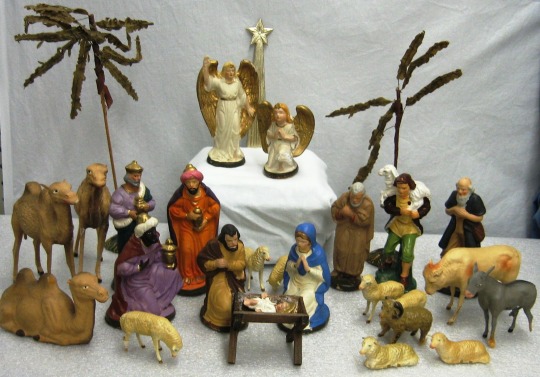
I Bring Unto You Good Tidings of Great Joy by Erin Doane, Curator
The image of the baby Jesus lying swaddled in a manger surrounded by Mary and Joseph, magi and shepherds, angels and animals is an icon of Christmas. The nativity scene or crèche has been reenacted in public and recreated in homes for centuries. The first “living” nativity was said to have been staged by Saint Francis of Assisi in a cave near Greccio, Italy in 1223 to remind people of the true meaning of Christmas. The living nativity was picked up by churches and the nobility who created ever more elaborate scenes. Today, it is standard at most Christmas pageants. The Radio City Christmas Spectacular in New York City concludes with the presentation of the nativity, featuring live camels and sheep. (READ MORE)
2 notes
·
View notes
Text
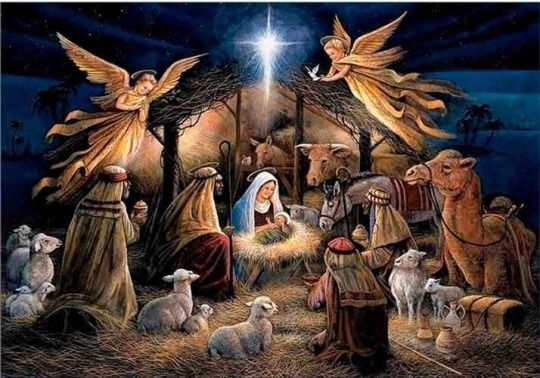
¡Hola, buenos días, humanidad! 🌍 ¡Feliz domingo! 🎄🎅🎁❄️⛄️🔔🌟 Hoy os dejo una imagen del portal de Belén y os cuento que su origen se sitúa en la Edad Media, en el año 1223 y tres años antes del fallecimiento de San Francisco de Asís. Con la autorización del papa Honorio III, el humilde fraile franciscano llevó a cabo una conmovedora misa de Navidad en el pueblo de Greccio. En este evento, se representó la escena del Nacimiento con una imagen del Niño Jesús, el buey y la mula, creando un cuadro emotivo que se acompañó con canciones y poesías populares. Religiosos de diversas regiones, junto con hombres y mujeres del lugar, fueron invitados a participar en esta Nochebuena iluminada por luces y antorchas.
La emotividad de este acontecimiento conmovió profundamente a la gente, extendiendo la costumbre a lo largo de los años en otros pueblos y ciudades. Los franciscanos fueron los pioneros en la representación plástica del aniversario de la Natividad.
Para tener en cuenta...
Recuerda que la Nochebuena nos brinda la oportunidad de reflexionar sobre el año que se va, agradecer por las bendiciones y renovar nuestros lazos afectivos. Es un momento para abrazar a nuestros seres queridos, valorar lo que realmente importa y abrazar el espíritu de la generosidad y la compasión.
Que esta Nochebuena nos deje corazones llenos de amor, memorias preciosas y la esperanza de un futuro lleno de alegría compartida. ¡Feliz Nochebuena, querida familia! Que el calor de nuestro amor continúe iluminando nuestros días en el año venidero.
9 notes
·
View notes
Text

St. Francis Setting Up the First Nativity Scene (Presepe) at Greccio in 1223, fresco at the San Francesco Convent in Pistoia executed by Antonio Vite, ca. 1390-1400
6 notes
·
View notes
Text
“ A partire dal 1223 si apre il periodo che i biografi [di san Francesco d'Assisi] definiscono della «grande tentazione», tentazione di abbandonare tutto, di disinteressarsi completamente della comunità, forse di non avere più fiducia in Dio. Ma ci sono momenti di remissione: uno di questi è la grandiosa celebrazione del Natale nell'eremo di Greccio nel 1223. Francesco organizza una sacra rappresentazione corale che trasforma in attore anche il pubblico accorso ad assistervi. Chiama un nobile di nome Giovanni, «di buona fama e di vita ancor migliore» sul cui affetto e devozione sa di potere contare e gli ordina, quindici giorni prima di Natale, di preparare lo scenario adatto. Dice all'amico: «Voglio rappresentare quel Bambino nato a Betlemme come se in qualche modo avessi davanti agli occhi i disagi in cui si è trovato per la mancanza delle cose necessarie a un neonato, come fu posto in una greppia e come stette sul fieno fra il bue e l'asino». Dobbiamo immaginare che per evocare la grotta siano state adattate le rocce della montagna, magari allargando qualche cavità naturale, oppure che per accogliere anche i fedeli sia stata costruita con tronchi d'albero una grande capanna? Quindici giorni sono un tempo eccessivo, se dedicati soltanto a preparare un po' di fieno e a condurre sul luogo due animali. Il bue e l'asino non fanno parte del racconto evangelico della Natività, ma furono aggiunti dai Vangeli apocrifi. Francesco, sensibile al messaggio delle immagini, ritenne bue e asinello indispensabili al suo teatro sacro.
Il racconto di Tommaso da Celano sembra la descrizione di un meraviglioso presepio vivente: vediamo accorrere «molti frati da varie parti; uomini e donne arrivano festanti dai casolari della regione, portando, ciascuno secondo le sue possibilità, ceri e fiaccole per illuminare quella notte nella quale s'accese splendida la Stella che illuminò tutti i giorni e i tempi. [...] Questa notte è chiara come pieno giorno e dolce agli uomini e agli animali. La gente accorre e si allieta di una gioia mai assaporata prima, davanti al nuovo mistero. La selva risuona di voci e le rupi imponenti echeggiano i cori festosi. I frati cantano scelte lodi al Signore, e la notte sembra tutto un sussulto di gioia. [...] Poi il sacerdote celebra solennemente l'Eucarestia sul presepio e lui stesso assapora una consolazione mai gustata prima». Francesco è felice, profondamente commosso. Si riveste di paramenti diaconali e canta con la sua bella voce il Vangelo, predica con parole dolcissime, trascina ed entusiasma gli astanti rievocando la piccola città di Betlemme, il Bambino divino e poverissimo, con tale entusiasmo infuocato che un cavaliere, forse il medesimo Giovanni, ebbe una visione: «Gli sembrava infatti che un neonato giacesse esanime nella mangiatoia, che il santo di Dio si avvicinasse e destasse quel medesimo bambino da quella specie di sonno profondo. Questa visione non manca - conclude Tommaso da Celano - di un suo significato perché davvero il fanciullo Gesù giaceva dimenticato nel cuore di molti e per grazia di Cristo, tramite il servo suo Francesco, fu risuscitato e il suo ricordo impresso in una memoria di nuovo partecipe». Nella preghiera composta da Francesco per il Vespro di Natale, alla descrizione della nascita nella mangiatoia segue la citazione della lode angelica: «Pace in terra agli uomini di buona volontà» (Lc 2,14): Cristo è venuto a portare la pace, quella pace che gli uomini non sanno trovare proprio nei luoghi dove egli nacque, la pace che Francesco era andato ad annunciare prima ai crociati e poi al sultano, e vorrebbe accolta dai conterranei, dai frati, dalla Chiesa. “
Chiara Frugoni, Vita di un uomo: Francesco d'Assisi, introduzione di Jacques Le Goff, Einaudi (collana ET Saggi n° 824), 2006⁶; pp. 112-113.
[Prima edizione: 1995]
#Chiara Frugoni#letture#leggere#saggistica#saggio storico#Francesco d'Assisi#medioevo#XIII secolo#presepe#Greccio#Storia medievale#Natale#natività#tradizioni#Storia d'Italia#Storia del Medioevo#basso medioevo#Lazio#presepe vivente#Storia delle religioni#semplicità#Chiesa Cattolica#cristianità#Jacques Le Goff#cristianesimo#vangeli apocrifi#rievocazioni#Tommaso da Celano#periodo natalizio#libri
2 notes
·
View notes
Text
SAINT OF THE DAY (October 4)

On October 4, Roman Catholics celebrate the feast of St. Francis of Assisi, the Italian deacon who brought renewal to the Church through his decision to follow Jesus' words as literally as possible.
In a January 2010 general audience, Pope Benedict XVI recalled this “giant of holiness as a great saint and a joyful man, who taught the Church that the secret of true happiness is to become saints, close to God.”
The future Saint Francis was born on an uncertain date in the early 1180s, one of the several children born to the wealthy merchant Pietro Bernardone and his wife Pica.
He originally received the name Giovanni (or John) but became known as Francesco (or Francis) by his father's choice.
Unlike many medieval saints, St. Francis was neither studious nor pious in his youth.
His father's wealth gave him access to a lively social life among the upper classes, where he was known for his flashy clothes and his readiness to burst into song.
Later a patron of peacemakers, he aspired to great military feats in his youth and fought in a war with a rival Italian city-state.
A period of imprisonment during that conflict turned his mind toward more serious thoughts, as did a recurring dream that suggested his true “army” was not of this world.
He returned to Assisi due to illness in 1205, and he began to consider a life of voluntary poverty.
Three major incidents confirmed Francis in this path.
In Assisi, he overcame his fear of disease to kiss the hand of a leper.
Afterward, he made a pilgrimage to Rome, where he deposited his money at Saint Peter's tomb and exchanged clothes with a beggar.
Soon after he returned home, Francis heard Christ tell him in a vision: “Go, Francis, and repair my house, which as you see is falling into ruin.”
Francis began to use his father's wealth to restore churches.
This led to a public quarrel in which the cloth-merchant's son removed his clothing and declared that he had no father except God.
He regarded himself as the husband of “Lady Poverty” and resolved to serve Christ as “a herald of the Great King.”
During the year 1208, the “herald” received the inspiration that would give rise to the Franciscan movement.
In 1223, he arranged for the first live nativity scene as part of the annual Christmas celebration in Greccio.
At Mass one morning, he heard the Gospel reading in which Christ instructed the apostles to go forth without money, shoes, or extra clothing.
This way of life soon became a papally-approved rule, which would attract huge number of followers within Francis' own lifetime.
Through his imitation of Christ, Francis also shared in the Lord's sufferings.
He miraculously received Christ's wounds, the stigmata, in his own flesh during September of 1224.
His health collapsed over the next two years, a “living sacrifice” made during two decades of missionary preaching and penance.
Francis of Assisi died on 3 October 1226.
Pope Gregory IX, his friend and devotee, canonized him on 16 July 1228.
St. Francis is one of the most venerated religious figures in Roman Catholic history.
He founded the Franciscan orders, including the Poor Clares and the lay Third Order.
He and St. Catherine of Siena are the patron saints of Italy. He is also the patron saint of ecology and of animals.
Francis is associated with patronage of animals and the environment.
It became customary for churches to hold ceremonies blessing animals on his feast day of the fourth of October, which became known as "World Animal Day."
4 notes
·
View notes
Photo



Primož Roglič of Slovenia and Team Jumbo-Visma celebrates at finish line as stage winner during the 58th Tirreno-Adriatico 2023, Stage 4 a 218km stage from Greccio to Tortoreto on March 09, 2023 in Tortoreto, Italy. (Photos by Tim de Waele/Getty Images)
32 notes
·
View notes
Photo

PRIMA PAGINA Leggo di Oggi martedì, 10 dicembre 2024
#PrimaPagina#leggo quotidiano#giornale#primepagine#frontpage#nazionali#internazionali#news#inedicola#oggi oggi#umidita#mobilita#tutto#metro#anno#vermiglio#golden#globe#social#tutti#eroe#napoli#greccio#presepio#mercato#artigianato#oggettistica#presepe#apertura#ingresso
0 notes
Text
Saint of the Day – 19 March – Blessed John of Parma OFM (c1209-1289) Priest
Saint of the Day – 19 March – Blessed John of Parma OFM (c1209-1289) Priest and Friar of the Friars Minor, the 7th Minister General of the Order (1247–1257) and a noted Theologian. He was known for his attempts to bring back the earlier spirit of the Order after the death of Saint Francis of Assisi. Born in 1209 at Parma, Italy as Giovanni Burali and died in 1289 at Greccio, Italy of natural…

View On WordPress
2 notes
·
View notes